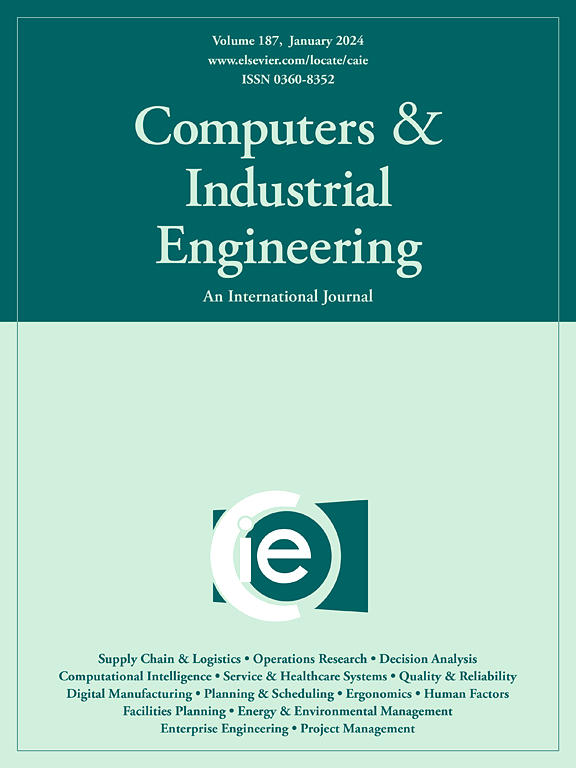利用多目标优化强化预报方法预测设备的剩余使用寿命
IF 6.7
1区 工程技术
Q1 COMPUTER SCIENCE, INTERDISCIPLINARY APPLICATIONS
引用次数: 0
摘要
数据驱动的方法使设备退化监测和预测迅速发展。然而,传统的深度模型依赖于弱先验退化知识,可能无法有效地纳入退化损伤信息。为了解决这一局限性,本文提出了一种用于设备健康预测的深度多目标优化强化预测(MORP)框架。具体而言,在特征和健康指标(HI)水平上结合了先验退化知识和多源深度特征。然后将其量化为无监督的多目标优化决策。在此之前,将多退化准则和HI泛化化为多目标函数,以提高HIs的泛化性、单调性、倾向性和鲁棒性。利用强化学习引导的群体智能优化方法,在保留Pareto边界优势的基础上构建了综合健康指标(CHIs)。为了解决chi内的异常,介绍了一种具有内插-外推项的HI毛刺校正方法。此外,剩余使用寿命的预测是通过监督预测方案完成的。最后,将提出的方法应用于设备数据集以验证其性能。本文章由计算机程序翻译,如有差异,请以英文原文为准。
Remaining useful life prediction of equipment using a multiobjective optimization reinforced prognostic approach
Data-driven methods have rapidly advanced equipment degradation monitoring and prognosis. However, traditional deep models rely on weak prior degradation knowledge and may not effectively incorporate degradation damage information. To address this limitation, a Deep Multiobjective Optimization Reinforced Prognostic (MORP) framework is proposed in this paper for equipment health prognosis. Specifically, a priori degradation knowledge and multi-source deep features are combined at both the feature and health indicator (HI) levels. They are then quantified into an unsupervised multi-objective optimization decision. Preceding this step, a multi-degradation criterion and HI generalizability are formulated as a multi-objective function, with the aim of enhancing the generalizability, monotonicity, tendency, and robustness of HIs. Comprehensive Health Indicators (CHIs) are then constructed while retaining the advantages of the Pareto frontier, using a reinforcement learning-guided swarm intelligence optimization method. To address anomalies within CHIs, a HI burr correction method featuring an interpolation-extrapolation term is introduced. Additionally, the prediction of remaining useful life is accomplished through a supervised prognostic scheme. Finally, the proposed methodology is applied to equipment datasets to validate its performance.
求助全文
通过发布文献求助,成功后即可免费获取论文全文。
去求助
来源期刊

Computers & Industrial Engineering
工程技术-工程:工业
CiteScore
12.70
自引率
12.70%
发文量
794
审稿时长
10.6 months
期刊介绍:
Computers & Industrial Engineering (CAIE) is dedicated to researchers, educators, and practitioners in industrial engineering and related fields. Pioneering the integration of computers in research, education, and practice, industrial engineering has evolved to make computers and electronic communication integral to its domain. CAIE publishes original contributions focusing on the development of novel computerized methodologies to address industrial engineering problems. It also highlights the applications of these methodologies to issues within the broader industrial engineering and associated communities. The journal actively encourages submissions that push the boundaries of fundamental theories and concepts in industrial engineering techniques.
 求助内容:
求助内容: 应助结果提醒方式:
应助结果提醒方式:


